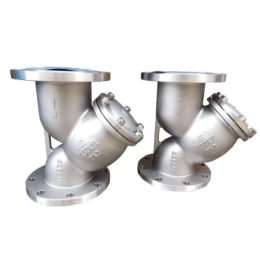Understanding Globe Valves: Advantages, Disadvantages, and Uses
Globe valves are a type of shut-off valve used in various industries to regulate, throttle, or block the flow of fluids. In this article, we will discuss the advantages, disadvantages, and uses of globe valves.
Advantages of Globe Valves:
Wear-Resistant: The friction between the valve clack and the sealing surface of the valve body is smaller than that of the gate valve, making it wear-resistant.
Small Opening Height: The opening height is generally only 1/4 of the diameter of the valve seat passage, which is much smaller than the gate valve.
Easy to Repair: Usually, there is only one sealing surface on the valve body and the valve flap, so the manufacturing process is relatively good, and it is easy to repair.
Better Conditioning Function: Compared to gate valves, globe valves have better conditioning function, small opening height, short closing time, convenient manufacture and repair, sealing surface is not easy to wear and abrasion, good sealing function, and long service life.
Disadvantages of Globe Valves:
Large Fluid Resistance: The valve body structure design of the stop valve is relatively curved, so the flow resistance is large, and the energy consumption is significant.
Unsuitable for Certain Media: Globe valves are not suitable for media with high viscosity, particles, easy to coke, and easy to precipitate.
Poor Conditioning Function: The conditioning function of globe valves is not as good as other types of valves.
Use Range:
Globe valves are suitable for use as a shut-off valve on pipelines carrying heat-conducting oil, toxic, flammable, highly permeable, environmentally polluting, and radioactive fluids. It can also be used for conditioning. It is an excellent product for inventing leak-free factories. All the valve castings are precision casting.
Selection Principle:
Under the influence of the effect of the globe valve, the following selection principles should be considered:
High-Temperature and High-Pressure Media: Stop valves should be used on pipelines or equipment for high temperature and high pressure media, such as thermal power plants, nuclear power plants, and high-temperature and high-pressure pipelines in petrochemical systems.
Pipelines Not Requiring Strict Convection Resistance: On pipelines that do not require strict convection resistance, such as where the pressure loss is not considered.
Small Valves: Small valves can choose needle valves, instrument valves, sampling valves, pressure gauge valves, etc.
Flow or Pressure Regulation: If there is flow regulation or pressure regulation, but the regulation accuracy is not high, and the pipeline diameter is relatively small, such as the pipeline with a nominal diameter ≤50mm, it should be selected.
Synthetic Industrial Production: Small fertilizers and large fertilizers in synthetic industrial production should use high-pressure angle stop valves or high-pressure angle throttle valves with a nominal pressure of PN160 and a nominal pressure of 16MPa or PN320 and a nominal pressure of 32MPa.
Desiliconization Workshop and Alumina Bayer Production: In the desiliconization workshop and pipelines that are prone to coking in the production of alumina Bayer, it is advisable to use a direct-flow stop valve or a direct-flow throttle valve with a separate valve body, a removable valve seat, and a cemented carbide seal pair.
Water Supply and Heating Projects: For water supply and heating projects in urban construction, for pipelines with smaller nominal diameters, stop, balance valves, or plunger valves can be used, such as pipelines with nominal diameters less than 150mm.
Use Range
Stop valves are suitable for use as a shut-off valve on heat-conducting oil, toxic, flammable, highly permeable, environmentally polluting, and radioactive fluid pipelines. They can also be used for conditioning and are an excellent product for inventing leak-free factories. All the valve castings are precision casting.
- “Understanding Ball Valves: Exploring the Parts of a High-Performance Control Solution”
- Cast Floating Ball Valves: Everything You Need to Know
- General Requirements For Common Materials Of National Standard Valves
- Electric Actuated Globe Valve
- 10 Ways To Extend The Service Life Of Industrial Valves
- Ball Valve Specifications And Functions



